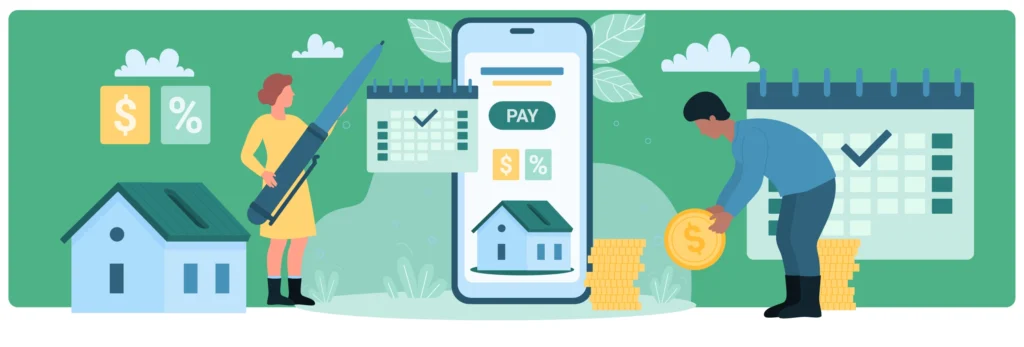A brief summary of Structured Settlements:
- Structured settlements involve negotiating future payments, calculating their present value, and obtaining court approval. Payment obligations are usually transferred to an insurer through an annuity to ensure secure, guaranteed payments.
- Structured settlement annuities and investment annuities both involve periodic payments. While structured settlements are court-approved compensation for plaintiffs and generally tax-free, annuities are investment products available to anyone, with varied tax treatment.
- Structured settlements are valuable financial tools that attorneys should consider for their clients, especially in larger cases and when beneficiaries are minors or unprepared to manage large sums. They protect plaintiffs from financial mismanagement and emotional stress, and offer defendants cost-saving advantages through tax-free, long-term payments. Using structured settlements can lead to faster resolutio
Structured settlements – legal since the passage of the Periodic Payment Settlement Act of 1982 – have been described in various ways:
- Annuity.org[i] – “a regular stream of tax-free payments granted to the plaintiff in a civil lawsuit. Structured settlements are meant to provide long-term financial security to the injured party.”
- Wikipedia[ii] – “a negotiated financial or insurance arrangement through which a claimant agrees to resolve a personal injury tort claim by receiving part or all of a settlement in the form of periodic payments on an agreed schedule, rather than as a lump sum.”
- FindLaw[iii] – “an arrangement that provides the plaintiff with regular payments over the course of several years or for the rest of the plaintiff’s life.”
Structured Settlements versus Annuities

Many practitioners confuse structured settlements and annuities since each represents a series of periodic payments to a beneficiary for a defined period (including life). While many structured settlements are annuities, most annuities are not structured settlements. According to one source[iv], about $10 billion of structured settlements covering 30,000 beneficiaries are in place today. Structured settlements represent a small portion of the $3 trillion of annuities in force at the end of 2020.[v]
The differences between the two financial instruments include
- Purpose: Structured settlements are a legally acceptable payment alternative for awards to plaintiffs in court cases. Annuities are financial instruments available to the investors that convert lump sums of capital into financial payments over selected periods.
- Beneficiary: Only plaintiffs – those bringing a lawsuit – can receive a structured settlement, the details subject to negotiation between plaintiff and defendant subsequently ratified by the court. In contrast, anyone can purchase an annuity.
- Tax treatment: Income to a beneficiary from a structured settlement is typically income tax-free in cases of personal injury, workers’ compensation, medical malpractice, and wrongful death. The tax status of an annuity payment varies according to its purpose and use by the purchaser.
The Mechanics of Structured Settlements

Structured settlements offer the parties significant flexibility in settling claims, including combinations of lump sums, periodic payments over periods of various lengths, and changes in payment amounts during its term. Even so, the process to negotiate and implicate a structured payment settlement is generally fixed:
Step 1
Plaintiff and Defense attorneys negotiate a settlement figure that includes lump sum initial payments and future payments for a period up to or beyond the plaintiff’s natural life. Payments can include projected costs of future medical care, living expenses, education costs, and other appropriate expenses.
Step 2
Defense attorneys calculate the present value of future payments based on an appropriate discount rate. The discount rate is typically established with a financial expert, often a settlement broker, knowledgeable of investment rates of return. Aggressive discount rates can jeopardize future payments, establishing an insufficient initial corpus to make payments as agreed. Consequently, plaintiff attorneys often engage their investment experts to verify the validity of the payment calculations. The plaintiff typically guarantees the settlement amount with the right of substitution.
Step 3
The presiding judge approves the settlement and enters a judgment on behalf of the plaintiff. In cases that involve plaintiff juveniles, the judge may stipulate certain conditions of the payment to protect the plaintiff.
Step 4
While defendants are legally liable to make payments under the settlement, most plaintiffs prefer the security of an independent insurer to assume and guarantee payment obligations. Defendants typically seek to close the matter and remove the liability from their books. Accordingly, with the plaintiff’s assent, the defendant acquires an annuity with terms corresponding to the settlement terms, transferring their obligation to the insurer.
In practice, many of the steps may begin simultaneously, rather than sequentially, to save time and money.
Review our list of Insurers that issue structured settlement payments.
The Benefits of Structured Settlements

Structured settlements are excellent legal solutions and should be part of every plaintiff and defense attorneys’ skill set. While many settlements are too small monetarily to justify a structured settlement, their application in larger settlements may be overlooked by attorneys. Failure to consider a structured settlement is a detriment to all parties on a lawsuit:
Beneficiaries
Structured settlements are especially pertinent in cases where the beneficiary is a minor. While parents control lump-sum settlement payments on behalf of the minor, the danger that they will lose the balance through bad investments or spend it for their own benefit is always present. Furthermore, the funds of a settlement become under the control of a minor when they turn eighteen, saddling them with a responsibility they are neither emotionally nor educationally equipped to handle. Child beneficiaries are not the only plaintiff who need protection from themselves. Few people are equipped to handle significant sums of money. For example, a high number of lottery winners go bankrupt within a few years of winning a big prize.[vi] Another study found that people in their 20s, 30s, and 40s inheriting significant assets waste one-half of their inheritance within a few years.[vii] Finally, few people are emotionally prepared with the onslaught of freeloaders after the receipt of significant funds. Using a structured settlement in such cases is a real benefit to plaintiffs.
The Legal System
Civil courts in the United States are experiencing an unprecedented backlog that continues to grow. A report by Thomson Reuters found that the backlog increased by one-third due to the pandemic. Some observers believe that the court system is irrevocably broken, and the backlog will never be cleared.[viii] According to King County Superior Court Presiding Judge Jim Rogers, “There will be many civil and family law cases that just won’t be able to be tried.” [ix]The inability to get to trial – now taking two years and longer from filing to court appearance – frustrates the parties involved in a civil suit and often creates real hardship. In the words of the American Bar Association[x]:
“… the psychological and sociological interests of clients need to be in our collective focus. The elderly involved in personal injury litigation, important product liability disputes affecting the welfare of the public, contract actions impacting the daily business operations of small businesses, and a host of other controversies require swift attention. Parties often do not want to live under the cloud of litigation for protracted periods with prolonged expenses with lengthened emotional stress… judicial stakeholders need to evolve their thinking and services to act in the best interests of our clients, not only from a legal and technological standpoint, but from informed and current emotional and ethical perspectives.”
Greater use of structured settlements, with negotiations beginning earlier in the process, will speed the resolution of cases and reduce court backlogs.
Attorneys
The use of future payments can significantly impact the defendant’s settlement cost. For example, a monthly reward of $20,000 tax-free for thirty years ($7.2 million) has an estimated present value of less than $4 million with a 2% discount rate. The defendant should be more inclined to accept a settlement that reduces their cost than a lump sum settlement of the same amount.
While lump-sum payments to a plaintiff are tax-free, any earnings on the amount received are taxed at individual tax rates. The ability to get a significant tax-free income for an extended time is a powerful incentive to accept a settlement that includes a structured settlement.
Plaintiff attorneys should delay settlement discussions until their clients reach the point of maximum medical improvement (MMI), i.e., further treatment will not improve the plaintiff’s physical or mental condition is known. Even so, negotiation of a settlement agreement after MMI is likely to be shorter than pursuing a trial. In addition, the plaintiff avoids the additional time and worry associated with a defendant’s appeal of the judgment.
Final Word
While the legal and tax benefits of structured settlements will be familiar to many attorneys, few possess the investment and financial knowledge to understand the nuances of a complicated settlement agreement with future and changing levels of plaintiff payments. For reasons, the services of a competent financial adviser experienced with structured settlements and annuities are generally warranted.
Structured settlements may offer several advantages to the parties in specific civil suits and the judicial system. However, they are not for everyone. Unlike socks and tee shirts, one size doesn’t fit all. Knowing about them and using them in the appropriate situation is a skill every attorney should possess.
[i]Annuity.org website. Access through https://www.annuity.org/structured-settlements/
[ii] Wikipedia.com website. Access through https://en.wikipedia.org/wiki/Structured_settlement
[iii] FindLaw.com: Structured Settlements: Pros and Cons. Access through https://www.findlaw.com/injury/accident-injury-law/structured-settlements-pro-s-and-cons.html
[iv] Annuity.org website. Access through https://www.annuity.org/structured-settlements/
[v] Insurance Information Institute: Facts + Statistics: Annuities website. Access through https://www.iii.org/fact-statistic/facts-statistics-annuities
[vi] Edelman, R. Why So Many Lotter Winners Go Broke. Fortune magazine. (January 15, 2016) access through https://fortune.com/2016/01/15/powerball-lottery-winners/
[vii] Zagorsky, J.L. Do People Save or Spend Their Inheritances? Understanding What Happens to Inherited Wealth. J Fam Econ Iss 34, 64–76 (2013). Access through https://link.springer.com/article/10.1007%2Fs10834-012-9299-y#citeas
[viii] Ejudicate website: Will the Civil Courts backlog ever be cleared? Access through https://www.ejudicate.com/civil-courts-backlog/
[ix] Editorial Board. (2021) Prioritize court funding to clear massive case backlog. Seattle Times. (July 20, 2021) Access through https://www.seattletimes.com/opinion/editorials/prioritize-court-funding-to-clear-massive-case-backlog/[x] Chester, M. (2021) Confronting Mounting Case Backlogs Using Creative Strategies and Virtual Jury Trial Technology. American Bar Association. (March 25, 2021) Access through https://www.americanbar.org/groups/litigation/committees/access-justice/articles/2021/winter2021-confronting-mounting-case-backlogs-using-creative-strategies-and-virtual-jury-trial-technology/
[x] Chester, M. (2021) Confronting Mounting Case Backlogs Using Creative Strategies and Virtual Jury Trial Technology. American Bar Association. (March 25, 2021) Access through https://www.americanbar.org/groups/litigation/committees/access-justice/articles/2021/winter2021-confronting-mounting-case-backlogs-using-creative-strategies-and-virtual-jury-trial-technology/